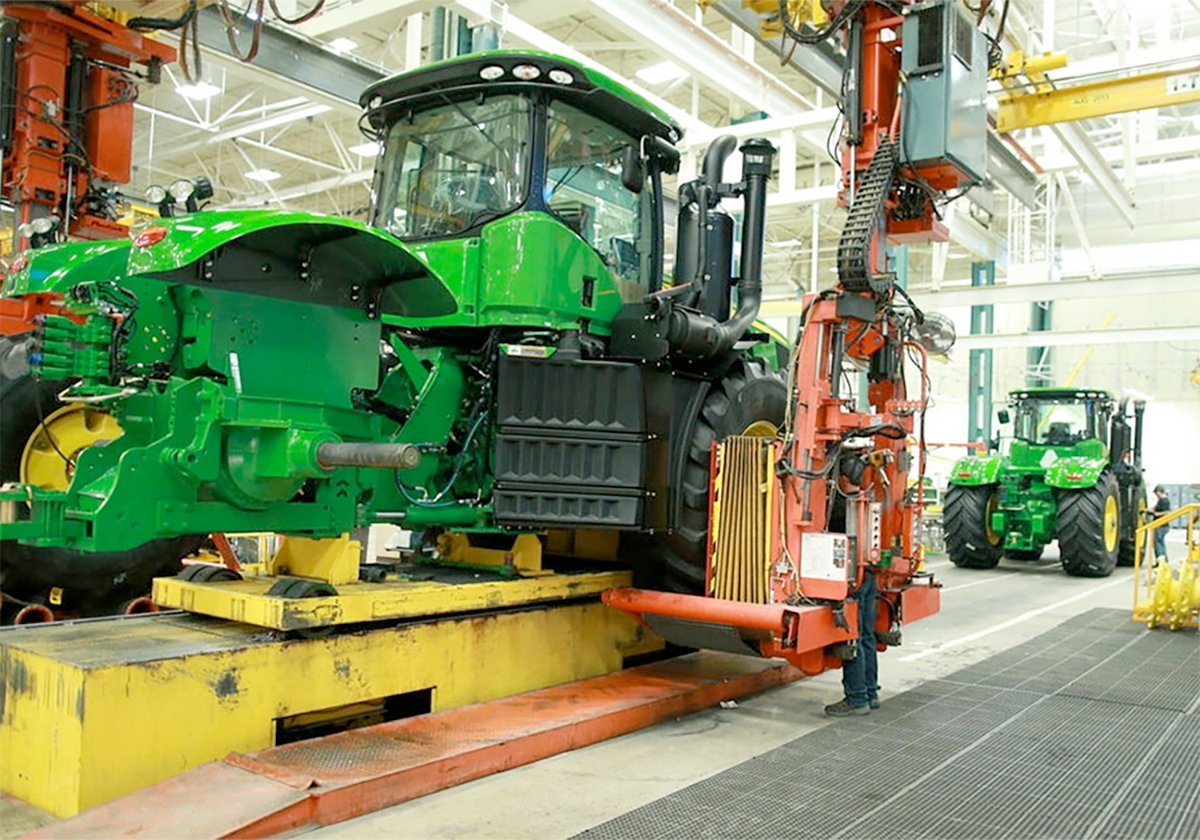The umbilical cord contains two arteries, a vein and the urachus, which is a tube that connects the fetal bladder to the allantois (a sac that stores urine).
Within a few hours of birth, these structures constrict and retract into the abdomen, leaving just a small exposed piece on the body wall that eventually dries up and falls off.
Calves develop two types of umbilical problems: a hernia, which is a defect in the abdominal muscle that allows internal organs to move into a pocket under the skin; and an infection that sometimes leads to an abscess.
Read Also

Trump’s trade policies take their toll on Canadian producers
U.S. trade policy as dictated by president Donald Trump is hurting Canadian farmers in a multitude of ways.
Any part of the umbilical cord or the tissue around the cord can become infected. The urachus is the most common part to be infected. The tube normally shrinks to form a soft cord hidden deep in the calf’s belly. If infected, pus collects inside the tube between the bladder and the umbilicus.
The umbilical vein can also become infected and, on rare occasions, so can the arteries. If the tissue surrounding the umbilicus gets infected and pus accumulates, an umbilical abscess results.
Calves born through a caesarean section are particularly at risk for umbilical infections because their umbilical cords are clamped or tied with a suture, which prevents normal retraction of the umbilical structures into the abdominal cavity.
Umbilical infections are often initially treated with antibiotics. Penicillin is most widely used. Surgery will probably be needed if the infection has not resolved or at least significantly improved after five days. If the calf is already sick, surgery should be attempted as soon as the calf is stabilized.
The first step in surgery is to make an incision around the entire umbilicus so the infected structures, either the arteries, vein or urachus, can be identified. The umbilicus and infected structures are then cut out.
Similarly, calves with large hernias often require surgery. An incision is made that first penetrates the skin and then the abdominal lining.
The membrane and skin make up the hernial sac containing the organs that have herniated out from the abdomen. If the hernia is large enough, the abomasum (one of the fore stomachs) may poke through the hole. More commonly, the omentum (fatty membrane) moves under the skin.
Many hernias are small to begin with, but enlarge as the calf ages. In most cases, the contents can be moved back into the abdomen by pressing on the hernia. In complicated cases, the organs can’t be moved, either because there is a concurrent abscess at the umbilicus or the organs are incarcerated into the hernial sac.
Hernia surgery involves cutting off the hernial sac, sewing the abdominal muscles together to close the hole in the body wall, and then sewing the skin.
If you have a calf with a lump at its umbilicus, the first step is to determine if it is an infection or a hernia. An easy way to do this is to stick a needle in the swelling and pull the plunger back on the syringe. If pus comes out, the calf has an abscess. If it fills with intestinal contents or a clear fluid, it has a hernia. The diagnosis can be complicated when a calf has developed a hernia secondary to an infection. Veterinary attention is needed to make the diagnosis, and in many cases, to correct the problem.
Jeff Grognet is a veterinarian and writer practising in Qualicum Beach, B.C.














